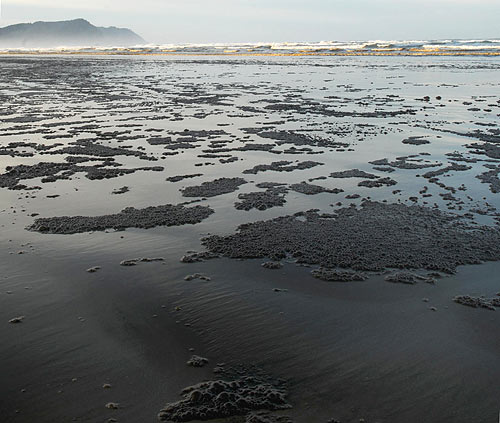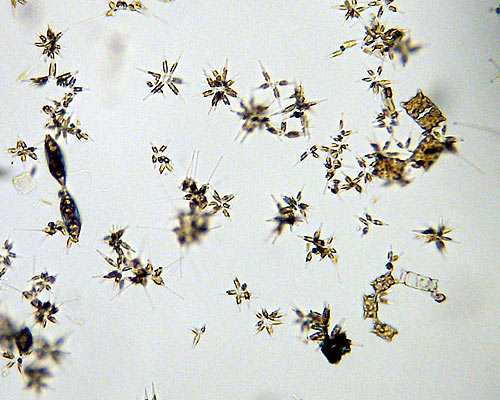 |
No Oil Spill on Oregon Coast - Just Lots of Phytoplantkon
Published 10/30/2010

Photos by Tiffany Boothe, Seaside Aquarium
(Seaside, Oregon) – If the pictures are anything like reality, Seaside looks like the Gulf disaster on a bad day. And yet it's a good thing.
This part of upper Clatsop County is notorious for freaking out visitors and residents alike, with conditions that make for awesome blooms of certain kinds of phytoplankton. The result of this is dark, oily-looking residue and brown waves that give the impression some massive oil spill just hit the north coast and is ending life as we know it.

But it's the opposite, in fact.
“Weather conditions have been fueling massive diatom blooms all along Clastop County beaches,” said Tiffany Boothe, with Seaside Aquarium. “Diatoms are single-celled plants (phytoplankton) that are found in both fresh and salt water. They are responsible for turning the surf brown and staining the sand.”
When there is such an abundance of them, the surf gets colored.
They are the bottom of the food chain: everything in the ocean feeds on diatoms and other plankton, either directly or indirectly. This is the main course for whales, on a consistent basis. In fact, the tiny, microscopic skeletons of these critters are partially responsible for the sea foam that is present on beaches. Air that creates bubbles through these skeletons – in the form of foam – is the other main element.

“Diatoms absorb large amounts of nitrates and phosphates that are delivered into the ocean by coastal rivers, contributing to their population explosion,” Boothe said.
All this gooey weirdness is a sign of a healthy ocean.

The diatoms up close and personal

More About Oregon Coast hotels, lodging.....
 |
 |
 |
LATEST OREGON COAST NEWS STORIES
Oregon Coast, Valley and Likely Washington Coast to Get Some Aurora Borealis ... |
Back to Oregon Coast
Contact Advertise on BeachConnection.net
Secrets of the Season |
Unusual Travel Articles TravelParanormal.com allows you to submit your own creepy tale or debunk one - or see up-to-the-minute news headlines about travel and the paranormal. News Headlines from All Over Oregon Need to scan Oregon headlines? Constantly updated news from all over Oregon: a comprehensive, up-to-the-minute display of news headlines from a variety of media |






































